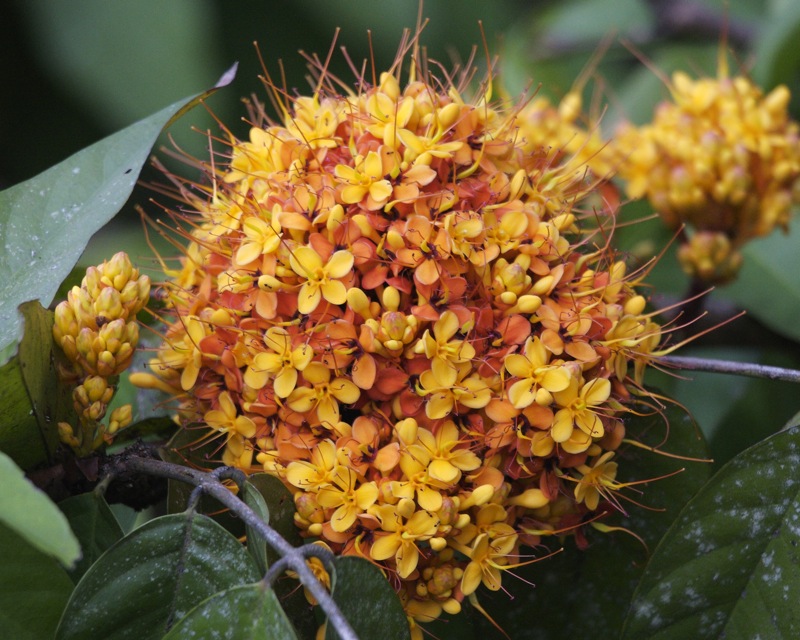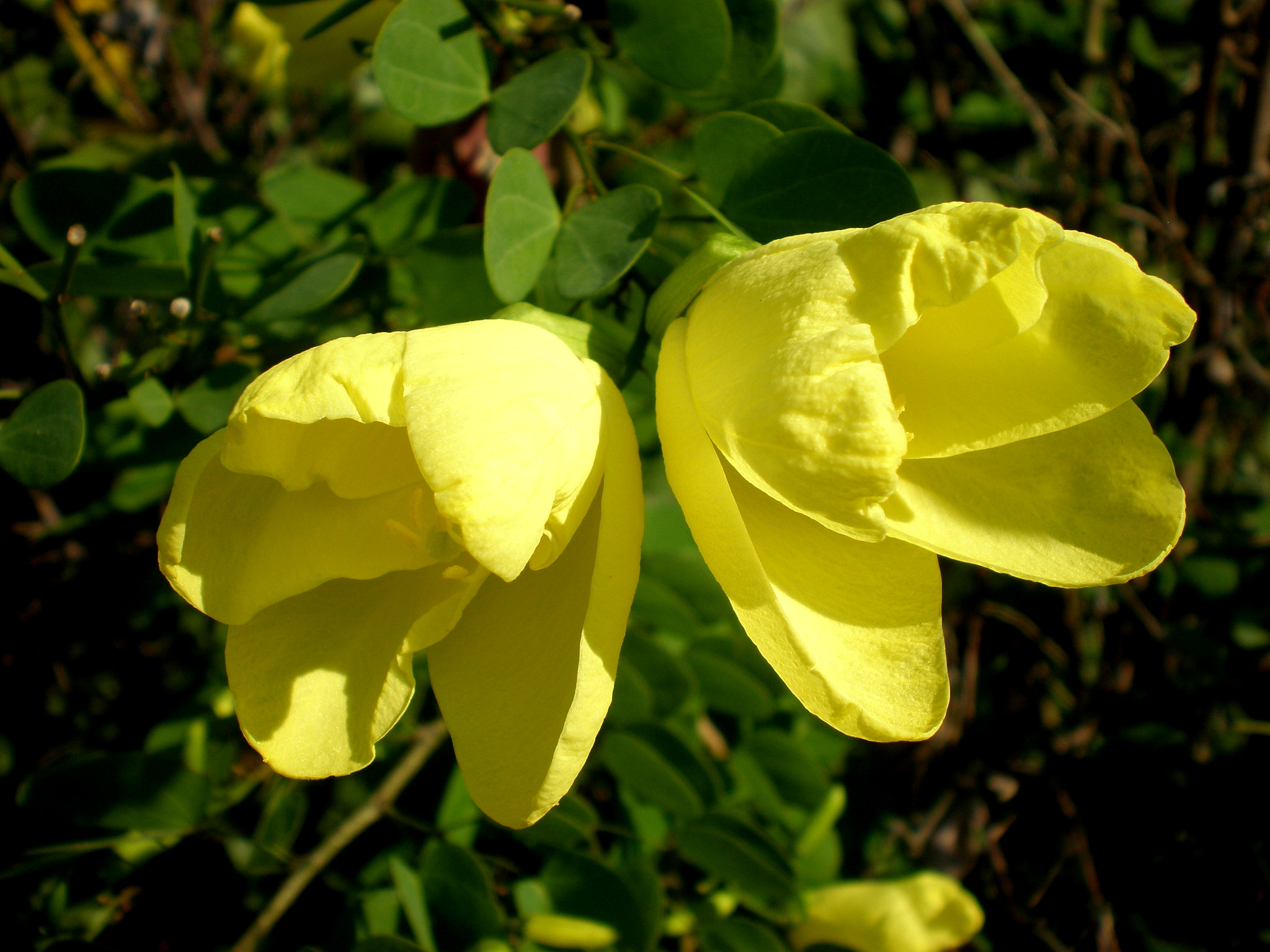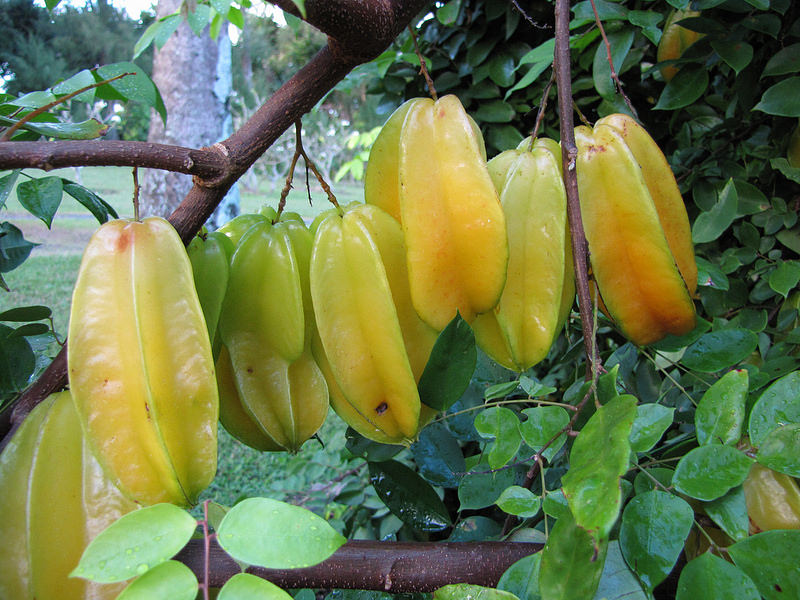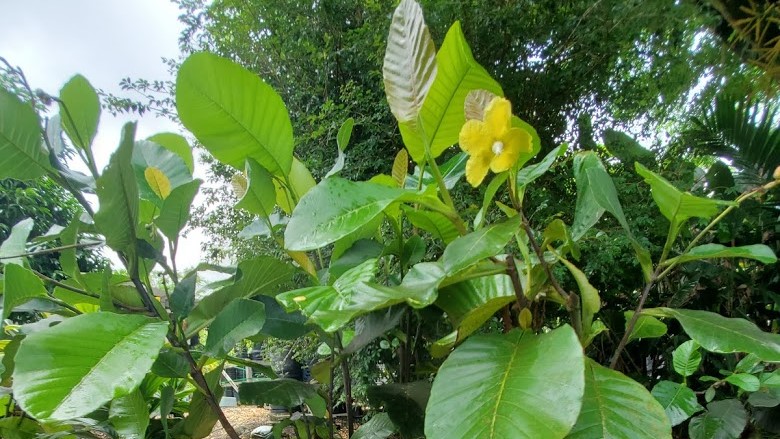
Shrubby dillenia
DO NOT PLANT: HPWRA Score: 11, High-Risk
Dillenia suffruticosa, commonly known as shrubby dillenia, is an invasive flowering shrub. Native to Borneo and Sumatra, shrubby Dillenia thrives in tropical climates. It is invasive in Jamaica, Sri Lanka, and Hawaii.
In Oahu, shrubby dillenia forms monotypic thickets in a wide range of ecosystems from lowland moist valleys to ridge-top forests. Likely, it was introduced as a botanical specimen at the Ho’omula botanical garden. The first adventive seedlings were found growing in a disturbed area just outside the grounds.
It makes more than 1000 viable seeds per meter square per plant! Attracted to the red seeds, nonnative birds eat and disperse them around. As is the case with lantana, nonnative birds are spreading invasive plants.
The Division of Forestry and Wildlife of the Hawai‛i Department of Land and Natural Resources has designated this species as one of Hawai‛i’s Most Invasive Horticultural Plants.
Prevention is best with invasive plants, shrubby dillenia should be avoided!
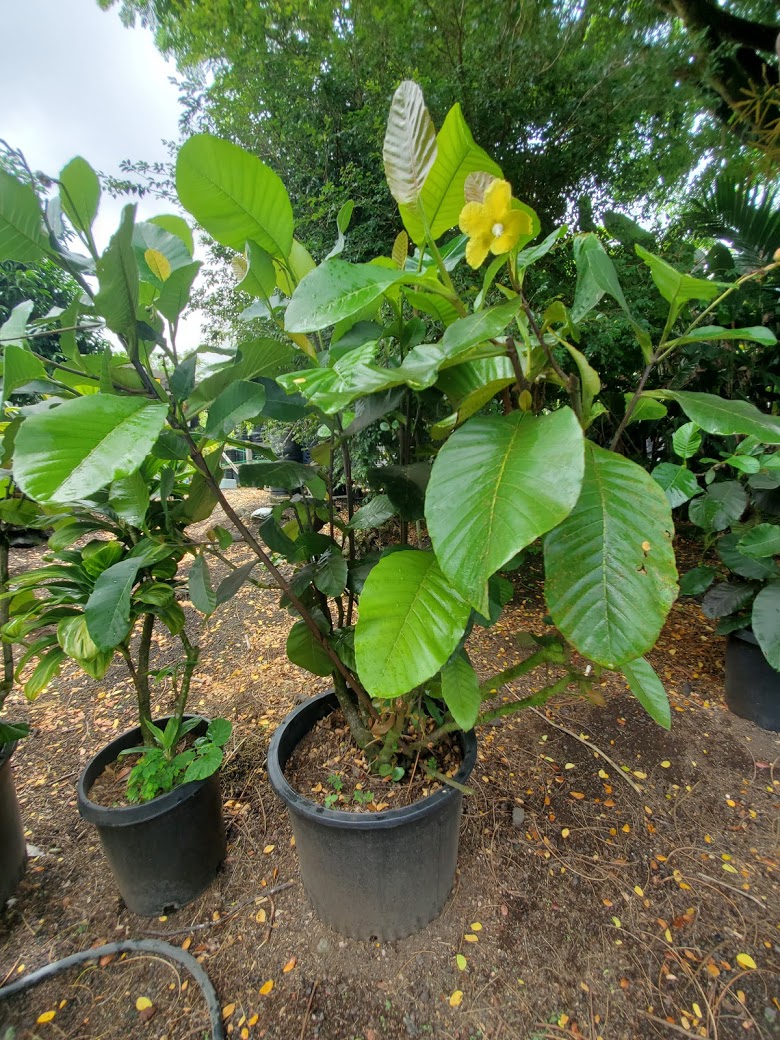
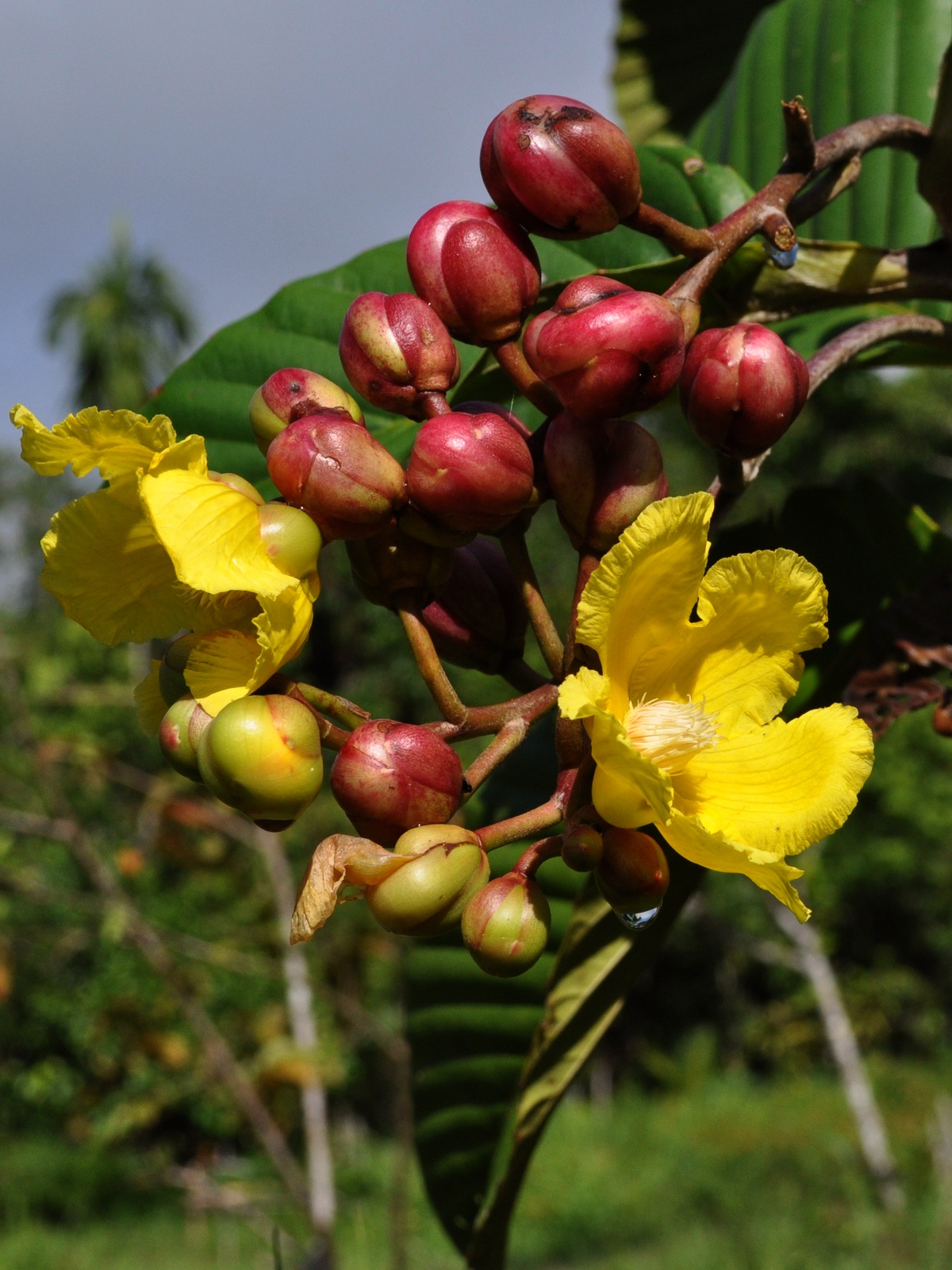
Photos (L-R): BIISC, Wikimedia Commons
Impacts:
- Forms monotypic stands that exclude other species
- Capable of invading a closed canopy forest
- Copious amounts of bird-dispersed seeds are produced
- Host for plant pests
Description:
- A multi-branched shrub growing up to 25 feet
- Bright green leaves are oppositely arranged
- Prominent winged petiole
- Yellow flowers have 5 petals with white stamens
- Flowers are loosely arranged in clusters
- Starshaped fruit capsules open to reveal numerous scarlet arils
Grow these instead
Photos (L-R): Wikimedia Commons, Forest & Kim Starr, Forest and Kim Starr
